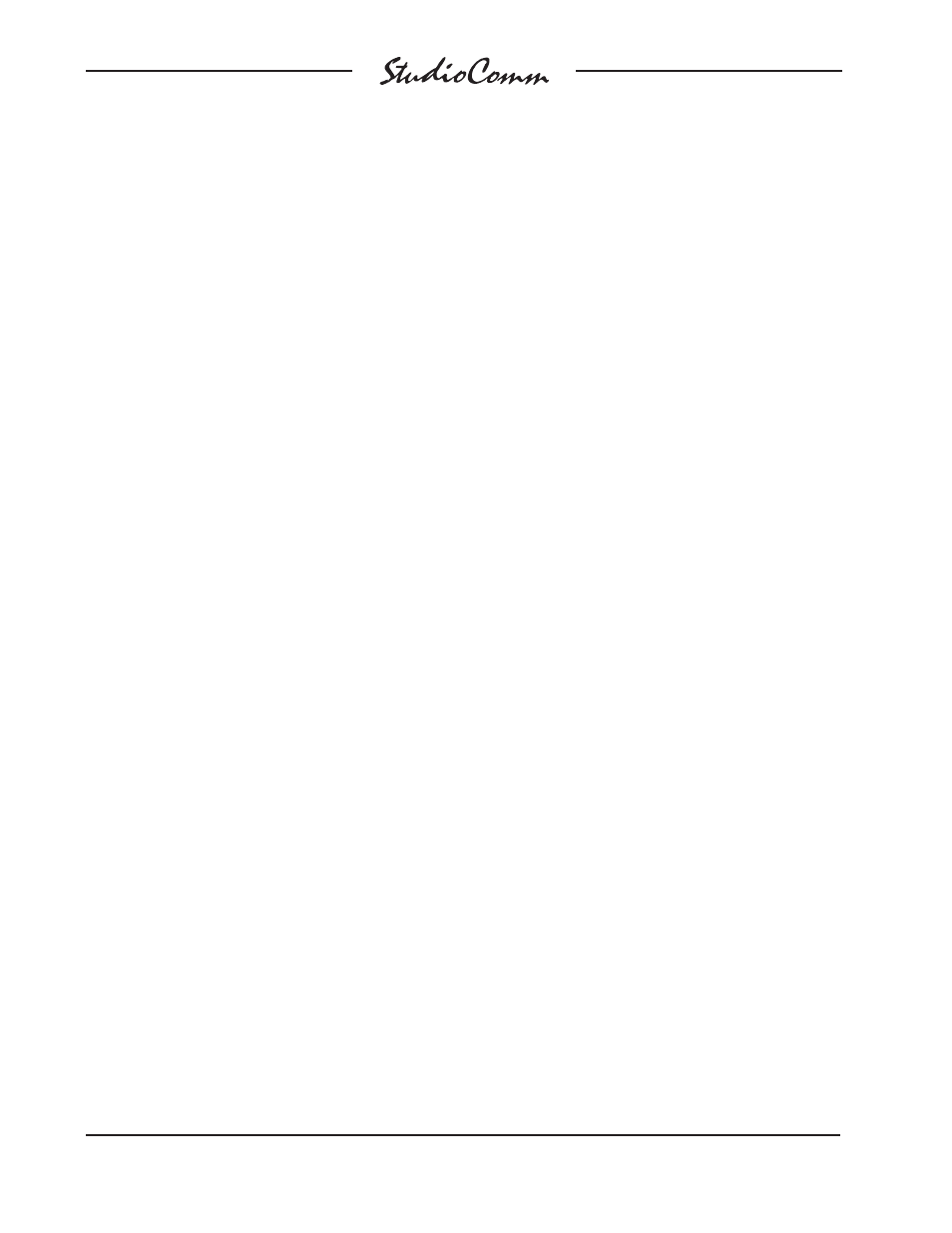Error codes err1 and err2, Error code err3, Sample rate conversion (src) – Studio Technologies 780-03 V.4.15 User Manual
Page 44

Issue 1, April 2015
Model 780-03/790 User Guide
Page 44
Studio Technologies, Inc.
for Surround
After a successful system power-up
sequence normal operation will then
commence.
Error Codes Err1 and Err2
Should a problem be encountered during
power up one of two error codes may show
on the Model 790’s 4-digit display. If
Err1
displays it indicates that communication
is not taking place with the Model 780-03.
The most likely cause would be incor-
rect wiring of the data pair linking the two
units.
Err2 indicates that the Model 780-03
is having problems with its internal logic
device. (A high-speed field-programmable
gate array (FPGA) serves as the digital
“heart” of the Model 780-03 and without it
no audio activity can occur.) The only way
to remedy this condition is to first try re-
moving and reconnecting AC mains power.
(And that’s a long-shot as to whether it
would accomplish anything.) If Err2 contin-
ues to be displayed the Model 780-03 must
be returned to the factory for service. Note
that for the vast majority of StudioComm
systems neither of these error codes, es-
pecially Err2, will ever appear.
Error Code Err3
If a digital audio signal with a sample rate
of other than 44.1, 48, 88.2, or 96 kHz is
connected Err3 will display and the mute
all function will be automatically enabled.
In this scenario, selecting a different
source that has a sample rate of 44.1, 48,
88.2, or 96 kHz will return the system to
normal operation.
Sample Rate Conversion
(SRC)
Circuitry associated with the stereo input
can provide sample rate conversion (SRC)
capability. A digital audio signal connected
to that input can have its sample rate and
timing re-synchronized to match the Model
780-03’s internal timing. While it would be
nice to proclaim that the engineers at Stu-
dio Technologies came up with a unique
and exotic circuit to perform this function
it’s really not the case. Several semicon-
ductor companies provide “single-chip”
SRC solutions and an excellent one from
AKM was selected for the Model 780-03.
The technical capabilities of the Model
780-03’s SRC function is stated in this
way: the sample rate of an input signal
can range from 1/6 to six times the Model
780-03’s output sample rate, with the ad-
ditional restriction that it must be no less
than 8 kHz and no more than 216 kHz.
The Model 780-03’s monitor output sample
rate is determined by the selected timing
reference (sync) signal and, if required, a
configured value. If a word clock, DARS
(AES11), or AES3 signal is the designated
sync source its rate will be the Model 780-
03’s output sample rate. If a video sync
signal is connected, the Model 780-03’s
sample rate is selected as part of the con-
figuration process.
So in practice what can the SRC function
accomplish? If the monitor output sample
rate is 48 kHz a signal connected to the
stereo input can have a sample rate from
8 to 216 kHz. Or, as another example, if
the Model 780-03’s monitor output sample
rate is 96 kHz a signal connected to the
stereo input can have its sample rate
range from 16 to 216 kHz.
As useful as allowing one sample rate to
be converted to another, it may be the abil-
ity of the Model 780-03’s SRC function to
re-synchronize a signal that proves most
valuable. For example, in typical post-
production and broadcast applications all
